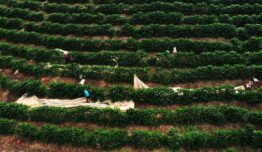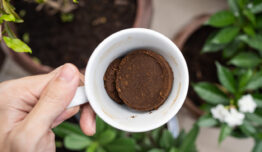
Geographical indication: understanding its advantages
The geographical indication boosts Brazilian regional production
Some products like beverages, food and craftwork, are strongly related to producers and their lands. Such relation is a key factor that pushes geographical indication towards international recognition.
In Brazil, for instance, there are 92 territories with Geographical Indication Seal. This classification, given by INPI (the Brazilian Institute for Intellectual Property), shows a place or region’s reputation in the production of certain product.
For this purpose, some criteria have to be considered. For example: tradition, production process, or even the environmental characteristics that affect the final quality. This type of indication also applies to coffee, as described in a report at Agência Brasil.
Indication Seal
Each region has its particular features. And in different places, it’s possible to enjoy unique food. Constantly, these goods are produced according to a series of special steps in order to keep typical flavor and aroma.
In the words of INPI’s Head of Branding, Industrial Design and Geographical Indication, Felipe Augusto de Oliveira, “Geographical Indication is the most sophisticated asset of intellectual property ever. Because it enables competitive differential by itself. Specially in relation to premium value that may be added to the product.”
Oliveira also remarks on the positive impacts of the classification for tourism and the region in a whole. “From the moment a product is geographically indicated, an upward tendence of 20% to 50% might be seen. Consequently, there is a rise in the development of these regions, specially by matters concerning the enhance in tourism and revenue conditions.”
Coffee from geographical region Serra da Mantiqueira
One of the most widely known cases of geographical indication is the sparkling beverage from the fermentation of grapes, produced in the region of Champagne, France.
In Brazil, some Indications are also famous and valued. Such as coffee from Serra da Mantiqueira, in Minas Gerais; cocoa from South of Bahia; cheese from Serra da Canastra, amidst others.
In this case, Oliveira stresses that Geographical indication is a collective right of intelectual property. Therefore, this benefit reaches a group of producers rather than an induvidual.
In many cases, SEBRAE (Brazilian Service for Support to Small and Medium Companies) provides technical support to asssociations and cooperatives in search for recognition, as stated by Hulda Giesbrecht, Innovetion Annalyst at SEBRAE.
“It is a way for small producers to add value to the production, and to bring development to their regions. Most of times, we do have a majority of small producers, behind a Geographical Indication, who wouldn’t have conditions to compete in production volume with the big ones.”
Thus, everyone may benefit from such meticulous process. “The differentiation of Geographical Indication brings evolvement to small businesses, and to other ventures located in those regions”, she adds.
Classification of Geographical Indications
Geographical indications might be of two types: Designation of Origin, and Indication of Origin.
Firstly, Designation of Origin acknowledges that the quality of product depends on local environment and geography. Example: coffee produced in Serra da Mantiqueira – MG, and honey from Planalto Sul – SC.
Acording to Proffessor Flávio Borém, from UFLA (Brazilian University of Lavras), specialty coffees compose market niches, as countries and regions search for distinction.
“When certain country or region draws international notoriety, it’s necessary to protect its assets”, he points. He had been involved in the process of accreditation of Coffees from Serra da Mantiqueira as Geographical Indication.
On the other hand, Indication of Origin recognizes a place that became famous for producing a given product. For example: filletembroidery from Lagoas Mundaú-Manguaba, AL, as well as the cachaça from Paraty, RJ.
Ângelo Mello is third generation of a family of producers of cachaça. “We’ve got charmed by the way my father loved to produce it”.
Cachaçaria Coqueiro is the oldest in activity in Paraty, RJ, and it preserves the receipt of the forefathers from 1803.




